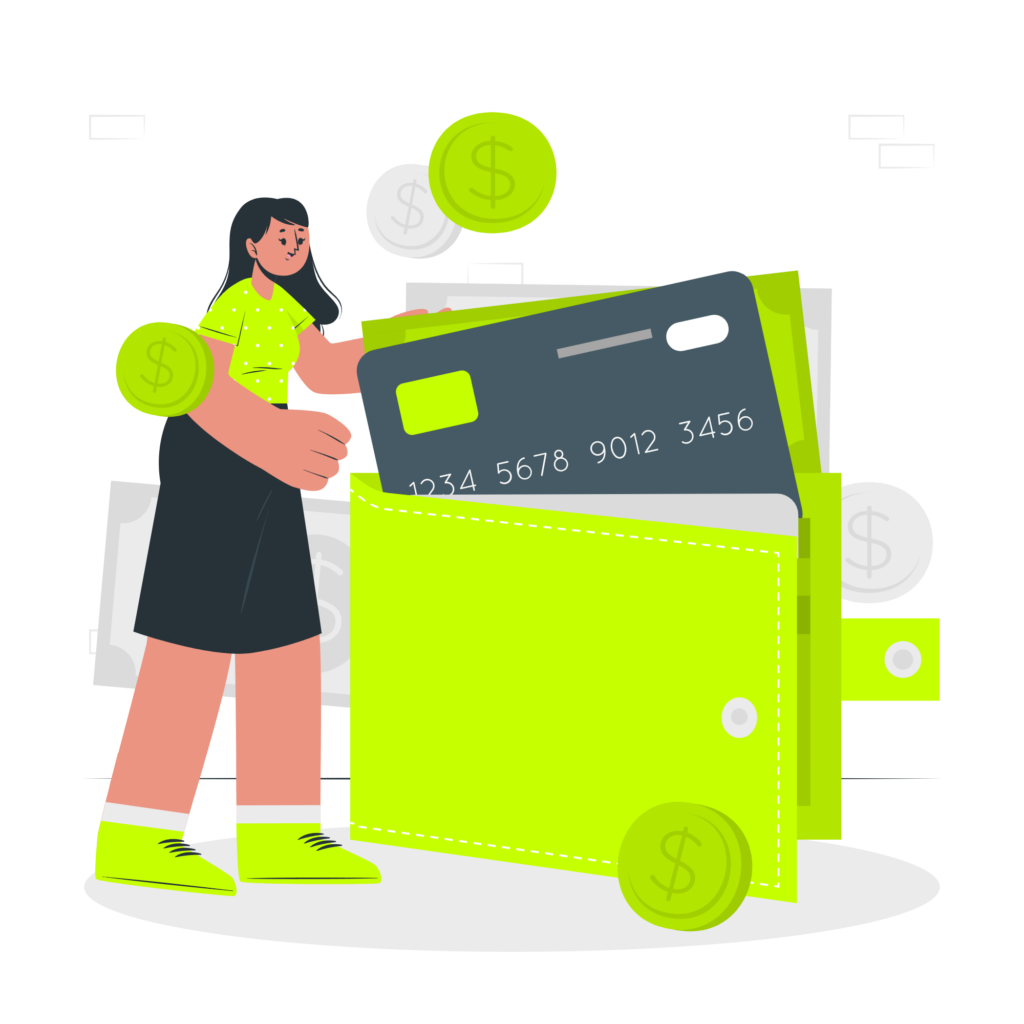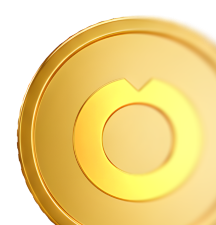TL;DR
Web3 wallets store and manage crypto, NFTs, and connect to dApps.
Types:
- Hot Wallets (MetaMask, Trust Wallet) – Convenient but less secure.
- Cold Wallets (Ledger, Trezor) – Highly secure, less convenient.
- Multi-Sig Wallets (Gnosis Safe) – Extra security for shared funds.
Top Picks for Beginners:
- MetaMask – Easy, dApp-friendly.
- Coinbase Wallet – Secure, integrates with Coinbase.
- Rainbow – Simple, NFT-friendly.
Security Tips:
- Protect your private key.
- Use strong passwords & 2FA.
- Download from official sources.
- Avoid phishing scams.
As the digital landscape shifts toward decentralization, Web3 wallets have become an essential tool for securely managing and interacting with digital assets. More than just a storage solution, they empower users with full control over their cryptocurrencies, NFTs, and decentralized applications (dApps). Unlike traditional banking systems, Web3 wallets eliminate intermediaries, ensuring true financial autonomy.
In this guide, we’ll explore the role of Web3 wallets, their types, key features, and how to choose the right one for your needs. Let’s dive in.
What is a Web3 Wallet?
A Web3 wallet is a digital wallet that allows users to store, send, and receive cryptocurrencies, manage NFTs, and interact with decentralized applications (dApps) on blockchain networks. It gives users full control over their assets without relying on intermediaries, using private keys for security. Read more about web3 wallets here.
Think of it like this: a traditional bank account is like a safe deposit box at a bank, with the bank holding the key. In contrast, a web3 wallet is more like a personal safe at home – you hold the key (called a private key), giving you complete control over your digital assets. This private key is like a super-secret password that allows you to access and manage your cryptocurrencies, NFTs, and other goodies within the Web3 ecosystem.
Types of Web3 Wallets
Just like choosing the right footwear for exploring different terrains, selecting the ideal web3 wallet depends on your needs and risk tolerance. Here’s a quick breakdown of the three main types:
Hot Wallets:
Imagine your favorite browser extension or mobile app. That’s the essence of a hot wallet: convenient, always online, and readily accessible. Perfect for everyday use and interacting with dApps, they offer a user-friendly experience (think of them as “flip-flops” for the Web3 world). However, convenience comes with a trade-off – being constantly connected to the internet makes them inherently more vulnerable to hacking attempts (think twice before storing your life savings in them, like leaving your valuables unattended on the beach).
Cold Wallets:
Picture a secure, physical device like a flash drive. That’s a cold wallet: super secure as it stores your private keys offline, completely disconnected from the internet. This makes them ideal for safeguarding high-value holdings (think of them as the “locked safes” of the Web3 universe). However, the offline nature comes at the cost of reduced convenience. Cold wallets may require additional steps for transactions and are less suitable for frequent interactions with dApps (think lugging around a heavy backpack on your daily commute).
Multi-signature Wallets:
Imagine requiring multiple signatures to authorize a transaction, like co-signing a document with trusted partners. That’s the concept behind multi-signature wallets: they enhance security by requiring multiple approvals for any transaction, making them ideal for managing shared funds or high-value assets (think “combination locks” for the tech-savvy user). While offering top-notch security, they can be more complex to set up and manage, making them less suitable for casual users (think needing a team to unlock your gym locker every time).

Top 10 Web3 Wallets
| Wallet Name | Type | Key Features | Beginner-friendly |
|---|---|---|---|
| MetaMask | Hot | Extensive dApp integration, supports multiple blockchains, built-in token swap | Yes, user-friendly interface and mobile app |
| Coinbase Wallet | Hot | Secure storage for major cryptocurrencies and NFTs, integrates with Coinbase exchange | Yes, user-friendly interface and mobile app, but limited feature set compared to others |
| Trust Wallet | Hot | Supports multiple blockchains and NFTs, built-in dApp browser | Yes, user-friendly interface and mobile app, but security concerns have been raised |
| Exodus | Hot | User-friendly interface, built-in exchange, supports various cryptocurrencies | Somewhat, user-friendly interface, but limited dApp integration |
| Ledger | Cold | Top-tier security, supports multiple cryptocurrencies, integrates with Ledger Live software | No, requires technical knowledge and additional hardware purchase |
| Trezor | Cold | Renowned for security, supports various cryptocurrencies, integrates with Trezor Suite software | No, requires technical knowledge and additional hardware purchase |
| Rainbow | Hot | Mobile-only wallet, focuses on user experience and security, supports major blockchains and NFTs | Yes, simple and intuitive interface, limited features compared to desktop wallets |
| Phantom | Hot | Designed for Solana blockchain, user-friendly interface, integrates with Solana dApps | Yes, user-friendly interface and mobile app, limited to the Solana ecosystem |
| Gnosis Safe | Multi-signature | Enhanced security for high-value holdings, requires multiple approvals for transactions | No, complex setup and requires technical knowledge |
| Argent | Hot | Focuses on social recovery and ease of use, supports major blockchains and NFTs | Yes, user-friendly interface and mobile app, limited feature set compared to others |
Beginner-Friendly Wallet Spotlight:
1. MetaMask:
- Ease of use: Boasting a user-friendly interface and mobile app, MetaMask makes navigating the web3 world a breeze. Its intuitive design allows beginners to easily send, receive, and store cryptocurrencies and NFTs, all while seamlessly connecting to various decentralized applications (dApps).
- Security features: MetaMask prioritizes security by offering features like password protection and seed phrase recovery. However, it is crucial to remember that, as a hot wallet, MetaMask remains connected to the internet, making it inherently more vulnerable than cold storage options.
- Customer support: MetaMask offers extensive customer support resources, including a comprehensive knowledge base, FAQs, and email support. While they don’t offer phone support, their resources are readily available and easy to navigate for beginners seeking assistance.
2. Coinbase Wallet:
- Ease of use: Similar to MetaMask, Coinbase Wallet boasts a user-friendly interface and mobile app, making it straightforward for beginners to manage their crypto assets. Additionally, its integration with the popular Coinbase exchange allows for easy buying and selling of cryptocurrencies directly within the wallet.
- Security features: Coinbase Wallet utilizes industry-standard security practices, including multi-factor authentication (MFA) and secure enclave technology. While the custodial nature of the wallet means users don’t directly hold their private keys, Coinbase offers a reputable and secure platform for beginners.
- Customer support: Coinbase offers comprehensive customer support options, including live chat, email support, and an extensive help center with articles and FAQs. This readily available support is crucial for beginners who may encounter questions or require assistance.
3. Rainbow:
- Ease of use: Designed specifically for mobile, Rainbow takes simplicity to heart. Its intuitive interface and focus on user experience make it ideal for beginners who prioritize a straightforward and comfortable experience. Additionally, Rainbow prioritizes social recovery features, offering alternative methods to regain access to your wallet in case of lost devices.
- Security features: Rainbow prioritizes security through features like biometric authentication and secure enclave technology. While it doesn’t offer the same level of security as hardware wallets, it provides adequate protection for beginners starting their web3 journey with smaller holdings.
- Customer support: While Rainbow doesn’t offer direct phone support, they have a dedicated support website with FAQs, articles, and a contact form for email inquiries. This allows beginners to access helpful resources and submit questions for assistance.
Features of a Web3 Wallet
Imagine your web3 wallet as a multifunctional tool in the exciting world of Web3. It goes beyond simply storing your digital treasures; it empowers you to interact with the decentralized ecosystem in various ways:
- Store your cryptocurrencies and tokens: This is the bread and butter of any web3 wallet. It acts as a secure haven for your crypto assets, allowing you to hold everything from well-established coins like Bitcoin to the latest meme tokens.
- Send and receive crypto with ease: Sending and receiving crypto becomes a breeze with your web3 wallet. Think of it as your personal money transfer service, allowing you to seamlessly exchange crypto with friends, family, or merchants who embrace the digital currency revolution.
- Unlock the world of dApps: Decentralized applications (dApps) are the lifeblood of Web3, offering a plethora of innovative functionalities from gaming and finance to social media and marketplaces. Your web3 wallet acts as your key, granting you access to explore and interact with these dApps, unlocking a universe of possibilities.
- Manage your NFT collection: Non-fungible tokens (NFTs) have taken the digital world by storm, and your web3 wallet becomes your personal gallery. You can use it to store, view, and manage your NFT collection, showcasing your unique digital treasures to the world.
How to Select Your Web3 Wallet?
Choosing the right web3 wallet is like picking the perfect backpack for your first hike – it needs to be secure, comfortable, and suitable for your needs. Here are some key factors to consider as a beginner:
Security First:
This cannot be stressed enough. Your web3 wallet holds your precious digital assets, so prioritize security above all else. Look for wallets from reputable providers with a proven track record of keeping user funds safe. Remember, your private key is the key to your digital vault, so treat it with the utmost care. Never share it with anyone!
Features Fit for Your Journey:
Not all wallets are created equal. Before diving in, consider your intended use cases. Are you primarily interested in storing and managing a few popular cryptocurrencies? Or do you yearn to explore the exciting world of dApps and NFTs? Choose a wallet that offers the functionalities you need. For instance, if you’re an NFT enthusiast, look for a wallet that seamlessly integrates with NFT marketplaces.
User-friendliness is Key:
As a beginner, navigating the Web3 landscape can feel overwhelming. So, prioritize user-friendly interfaces and clear instructions. Look for wallets with intuitive designs and readily available customer support. Remember, a complex interface might discourage you from exploring the full potential of Web3.
By keeping these guiding principles in mind, you’ll be well on your way to selecting the perfect web3 wallet that empowers you to confidently explore the decentralized future.
How to Protect Your Web3 Wallet?
- Your Private Key is Sacred: Remember, your private key is the key to your digital assets. Treat it with the same care you would give your most prized possession. Never share it with anyone, not even “customer support” or seemingly helpful strangers online.
- Strong Passwords are Your First Line of Defense: Craft strong and unique passwords for your web3 wallet, using a combination of uppercase and lowercase letters, numbers, and symbols. Resist the urge to reuse passwords across different platforms.
- 2FA: Double the Security, Double the Peace of Mind: Whenever available, enable two-factor authentication (2FA) on your web3 wallet. This adds an extra layer of security, requiring a second verification step (like a code from your phone) to access your funds, making it much harder for unauthorized individuals to gain access.
- Download Wisely, Stay Vigilant: Always download your web3 wallet from the official website or source. Beware of malicious websites or app stores that might try to trick you into downloading fake wallets to steal your private keys.
- Beware the Phishing Net: Cybercriminals often use phishing scams to trick you into revealing your private key or clicking on malicious links. Be cautious of unsolicited emails, messages, or websites claiming to be from your wallet provider or other official entities. If something seems suspicious, don’t click on any links or provide any information.
By following these simple yet crucial security practices, you can significantly reduce the risk of compromising your web3 wallet and ensure the safekeeping of your digital assets. Remember, vigilance and awareness are key to navigating the exciting, yet sometimes treacherous, landscape of Web3.
Conclusion
As we wrap up this exploration of web3 wallets, remember the key takeaways:
- Web3 wallets are your essential companions in the decentralized world, acting as secure storage for your digital assets and granting access to the vast potential of dApps and NFTs.
- When choosing your first web3 wallet, prioritize security by selecting reputable providers and safeguarding your private key with utmost care.
- Opt for features that align with your needs, whether it’s storing popular cryptocurrencies or diving into the world of NFTs and dApps.
- User-friendliness should be a top consideration for beginners, making the initial learning curve less daunting.
With the right knowledge and a secure web3 wallet in hand, you’re now equipped to explore the exciting frontiers of Web3. Remember, the decentralized revolution is just beginning, and the possibilities are endless. So, venture forth, embrace the potential of user-owned data and applications, and enjoy the journey into the decentralized future!
FAQs
What are Web3 wallets and why are they important for cryptocurrency users?
- Web3 wallets are digital wallets that allow users to store, send, and receive cryptocurrencies and interact with decentralized applications (DApps) on the blockchain, providing essential security and utility.
How do I choose the best Web3 wallet for my needs?
- Consider security features, supported cryptocurrencies, ease of use, compatibility with various blockchains, and additional functionalities like DApp integration when selecting a Web3 wallet.
Are there any free Web3 wallets available?
- Yes, many Web3 wallets are free to download and use, but make sure to review their security features and supported assets.
What are the differences between hardware and software Web3 wallets?
- Hardware wallets store private keys offline, offering enhanced security, while software wallets are more accessible and user-friendly, stored on a device or online.
Can Web3 wallets interact with all blockchain networks?
- Not all Web3 wallets support every blockchain network. It’s crucial to choose a wallet that supports the specific blockchains and cryptocurrencies you intend to use.
How do I secure my Web3 wallet from potential threats?
- Use strong, unique passwords, enable two-factor authentication, regularly update your wallet software, and consider using a hardware wallet for added security.
What role do Web3 wallets play in decentralized finance (DeFi)?
- Web3 wallets allow users to directly interact with DeFi platforms and services, enabling them to swap tokens, lend or borrow funds, and participate in yield farming without intermediaries.
How can I recover my Web3 wallet if I lose my keys?
- Always back up your wallet’s recovery phrase or private key in a secure location; without this, it’s impossible to recover your wallet if you lose access.
What are the tax implications of using a Web3 wallet for cryptocurrency transactions?
- Depending on your jurisdiction, cryptocurrency transactions can be taxable events. Keep detailed records of your transactions for tax purposes.
How do Web3 wallets support NFT transactions?
- Web3 wallets enable users to buy, sell, or transfer NFTs on various marketplaces and platforms, supporting direct interaction with the blockchain and ensuring ownership and transferability.








